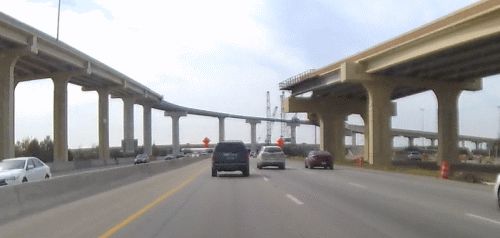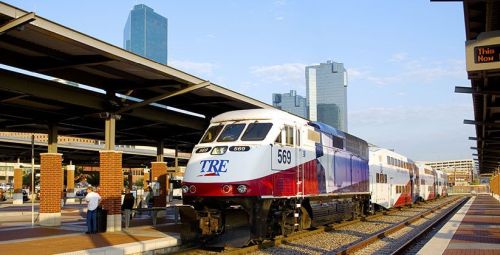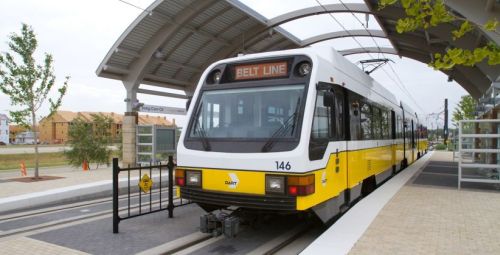The Flyover Fairy finally blesses San Antonio

Framegrab from dashcam video of work on the SH 151/Loop 410 interchange flyovers
Ask any roadgeek (yes, it’s a thing) and they’ll tell you that nobody (perhaps with the possible exception of California, blah!) does freeway flyovers like Texas. And in Texas, Houston was once the undisputed King of the Flyover, although Dallas had had a nice collection of big– albeit cookie-cutter– interchanges since the ’70s even before the impressive “High Five” interchange came along in 2005. But while doing a drive through of the abundant road work over in the SH 151 and US 90 areas here in San Antonio earlier this week, I couldn’t help but be impressed by dizzying number of flyovers now under construction here and it got me to thinking about the number of such interchanges either already open, under construction, or coming soon here in “the 210” (or is it now “the 210/726”?)
Passenger rail Transit: commuter rail light-rail
by Brian
Comments Off on The difference between commuter rail and light rail (redux)
The difference between commuter rail and light rail (redux)
I wrote about this back in 2010, but I feel it needs a revival after seeing yet another story in the local media referring to the once-proposed rail project between San Antonio and Austin as “light rail”. This is incorrect– that project, known as Lone Star Rail or “L-Star”, was to be a commuter rail line, not light rail. It’s not just semantics– there is a big difference in the two. Unfortunately, “light rail” continues to be a buzzword that people around here use without fully understanding what it actually means.
Commuter rail typically uses large, Amtrak-style trains running at fairly high speeds on completely dedicated right-of-way with limited, widely-spaced stops and schedules more oriented to twice-a-day commuters, meaning midday and weekend service is infrequent or even non-existent. This was the type of service planned between San Antonio and Austin. The TRE train between Dallas and Ft. Worth is an example of such service here in Texas.

TRE commuter rail
Light rail (LRT), on the other hand, uses smaller, lighter trains (thus the term “light” rail) that more closely resemble large streetcars than they do “regular” trains, run at somewhat slower speeds, often run in dedicated rights-of-way but sometimes run on streets, have rather closely-spaced stations or stops, and have fairly frequent schedules and short headways (time between trains) all day long. This is likely the type of rail service that would be built by VIA in San Antonio if they build a rail line someday although there has been some discussion of building a commuter rail route using the rail line between downtown and the RIM. DART in Dallas and Metro in Houston are examples of LRT in Texas.

DART light rail
Some other differentiations: Commuter rail trains are much longer than LRT trains and connect the central city to the suburbs while LRT trains typically run mostly within the main urban area (in San Antonio, that would be within Loop 1604.) Also, commuter rail trains are frequently diesel-powered, while LRT trains are almost always electric-powered.
Of course, just to confuse things, there are exceptions, including one just 70 miles up the road (or track as it were): Austin’s MetroRail commuter rail service uses diesel-powered LRT-style trains for what is actually a commuter rail service.
Hopefully this will put an end to the frequent misuse of “light rail” around here to refer to the possible rail service between SA and Austin, although I doubt it.
If you want to learn about the different types of rail systems, Wikipedia has a nice overview here. Denver’s RTD also has a nice write-up. And see “How does commuter rail differ from light rail and heavy rail?”